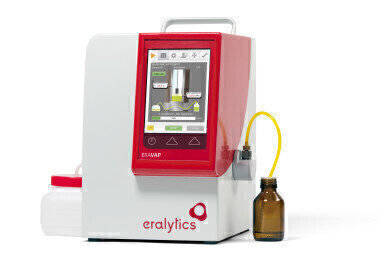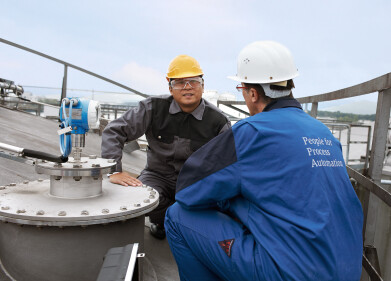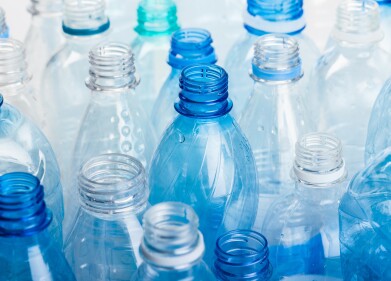Analytical Instrumentation
Vapour Pressure Testing of Crude Oil
Feb 21 2014
The vapour pressure of crude oil is an important parameter for storage and transportation. The vapour pressure depends on the available headspace above the liquid as well as on the temperature. The smaller the headspace volume and the higher the temperature of the crude the higher its vapour pressure gets. To ensure safe transportation of crude oil in a pipeline, which typically occurs at very low vapour to liquid ratios, the pressure of the pipeline has to adjusted according to the vapour pressure of the crude at a given transportation temperature to prevent vapour locks. If the necessary pressure exceeds the pressure limit of the pipeline the crude oil has to be degasified prior to transportation. Another important question that can be answered by measuring the vapour pressure of crude oils is the maximum temperature at which the crude oil can be safely transported or stored.
Because of the seriousness of this topic, the US Department of Transportation issued an Emergency Restriction/Prohibition Order in February 2014 to all persons who offer for transportation, or transport, in tank cars by rail in commerce to, from and within the United States, a bulk quantity of Petroleum crude oil.
To be able to predict the behavior of a certain crude oil it is therefore absolutely necessary to measure its vapour pressure at different V/L ratios and at different temperatures. A very versatile ASTM standard that allows such variable conditions to be used is ASTM D6377. In May 2013 the EPA acknowledged this method as a broadly applicable alternative for the determination of the true vapour pressure of crude oil under title 40 CFR.
ERAVAP a fully automated vapour pressure analyser by eralytics GmbH (Austria) complies with ASTM D6377. Additionally ERAVAP also offers the latest vapour pressure methods ASTM D5191, ASTM D6378 and D6897 for the measurement of fuels as well as the V/L method ASTM D5188. ERAVAP is broadly accepted in North America and around the world at refineries, pipeline and terminal companies. With its rugged design and its intuitive touch-screen operation it is not only used in laboratories but can also be safely operated in the field.
Digital Edition
PIN 25.1 Feb/March
March 2024
In This Edition Safety - The technology behind the ION Science Tiger XT - Safety with ammonia and LOHCs as hydrogen carriers Analytical Instrumentation - Discussion on new tribology te...
View all digital editions
Events
Apr 22 2024 Hannover, Germany
Apr 22 2024 Marrakech, Morroco
Apr 22 2024 Muscat, Oman
Apr 22 2024 Rotterdam, Netherlands
Apr 23 2024 Singapore


















